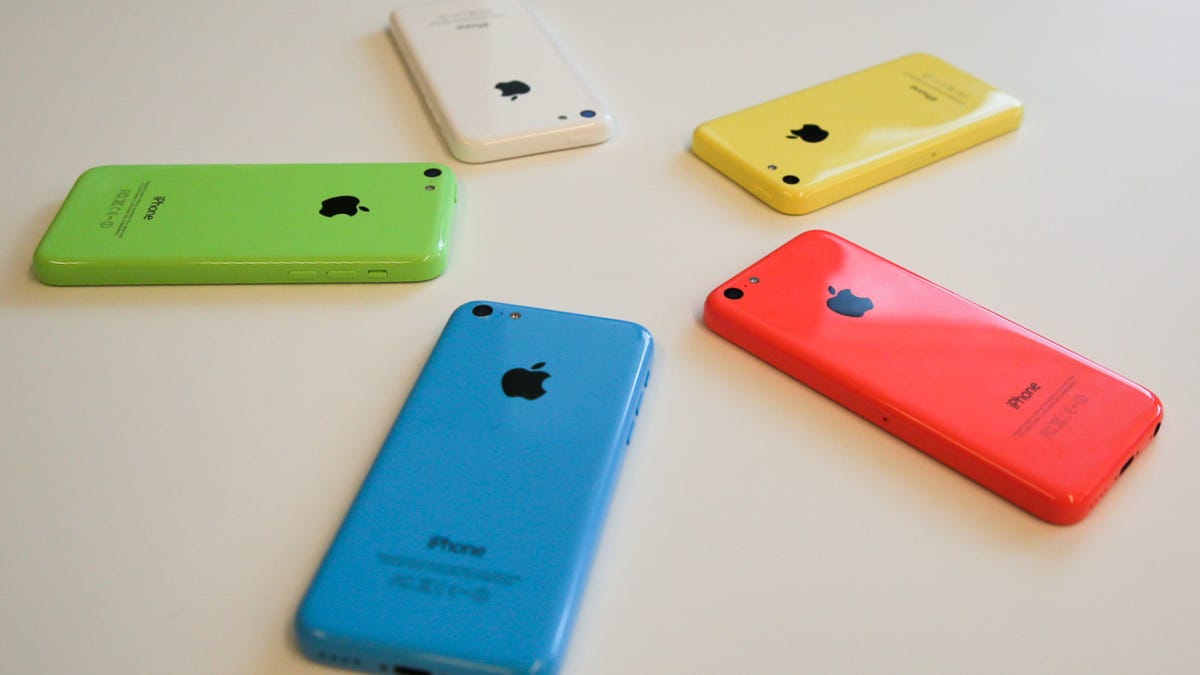Why I'm gladly spending $100 more on the iPhone 5S over the iPhone 5C
Only $100 separates the iPhone 5C and 5S. But with all the advantages of an iPhone 5S, paying that extra cash is a no-brainer.
As anybody who's ever shopped for an Apple product knows, Apple is a master at pricing products so you end up torturing yourself over whether to spend the extra money on a feature upgrade, even if you know it isn't really worth the premium Apple is asking for it.
Often that upgrade involves more memory, a faster processor, or a higher-capacity hard drive. For instance, when I bought an iMac a few years back, I decided against bumping the processor up to an Core i7 from a Core i5 because the price delta just seemed too great for the modest performance bump I was going to get. But the way Apple priced the upgrade -- I think it was around $250 extra -- I agonized a bit over the decision and wondered whether I was showing restraint or just being cheap.
The $100 dilemma -- or lack thereof
Now we get the iPhone 5C and the iPhone 5S. Price difference: $100. Both go on sale in the US (and several other countries) on September 20. You can preorder the 5C (as of September 13). For reasons known only to Apple, you cannot preorder the 5S.
But before you click the preorder button on the 5C, step away from the keyboard.
The reviews aren't out yet -- and they won't be until a few days before the 20th, if Apple follows its previous standard operating procedure. And I wasn't at the Apple event, so I haven't even touched either of these phones yet.
That said, the 5C doesn't appear to be much more than 2012's
So, unlike the iMac agony I described above, weighing the choice between iPhone models is much more cut and dry. When I compare both new models, I just can't see a reason not to spend the extra $100.
Here's why -- or to put it another way, here's what you're giving up when you buy the 5C instead of the 5S.
- Faster A7 64-bit CPU: Apple says the iPhone 5S is twice as fast as the existing iPhone 5. Since the iPhone 5C runs on the same processor as the 5, it stands to reason that the 5S will be twice as fast as the 5C. That seems like a big difference. (Check out Stephen Shankland's article on Apple's A7 chip to get a better understanding of what the 64-bit architecture means).
- Better camera: Apple is touting how good the new camera is in the 5S and the better flash performance (you can read all about the 5S' camera here). With the 5C you get the iPhone 5's camera. Also, because the 5S has the faster A7 processor, it enables such features as slow-motion video capture. That feature isn't available in the 5C.
- New M7 chip: Inside the 5S is a new M7 chip that's designed to be paired with next-generation fitness-tracking apps. It appears your phone will also double as a Nike Fuel Band. Those things cost $150, but who's counting?
- Touch ID fingerprint scanner: One of the 5S' key upgrades over the 5 is the new fingerprint security system in the home button. We can debate about how cool and useful that feature is, but it's not in the 5C.
- A lighter phone: The iPhone 5S (and iPhone 5) weighs 3.95 ounces; the 5C weighs 4.65 ounces.
- An extra year of future-proofing: After a few years, Apple typically stops supporting certain devices for its OS updates. A few years from now, when Apple's releasing iOS 10 or 11, you may not be able to update the iPhone 5 or 5C with it. But you'll be able to update the 5S.
- Better resale value: With Apple's new trade-in program, in a couple of years, if you go to trade in your 5S (or sell it on eBay or Amazon), you're going to get more for it than your 5C. Maybe as much as $50 or $100 more.
Again, because the iPhone 5C appears to have better battery life than the iPhone 5, early reports suggested that it might offer better battery life than the 5S. But if you look at Apple's site, the battery life for both the 5C and 5S are identical. So, in fact, we're looking at a battery life draw.
Of course, we'll have to run both phones through our battery of battery tests to confirm their battery life. But according to Apple's specs, there's no difference.
So again, the only advantage of the 5C appears to be its lower price tag. True, to some people, $100 is a significant amount of money. But spread that out over the life of ownership of the phone, it really isn't much, especially when you consider how much your monthly bill is -- and the fact that you're almost certainly using your phone every day.
That's why I think Apple will eventually have to lower iPhone 5C's price. Simply put, the price delta between the two phones has to be greater before there's anything to agonize about.
For me, the choice is easy. The iPhone 5C isn't worth buying.


